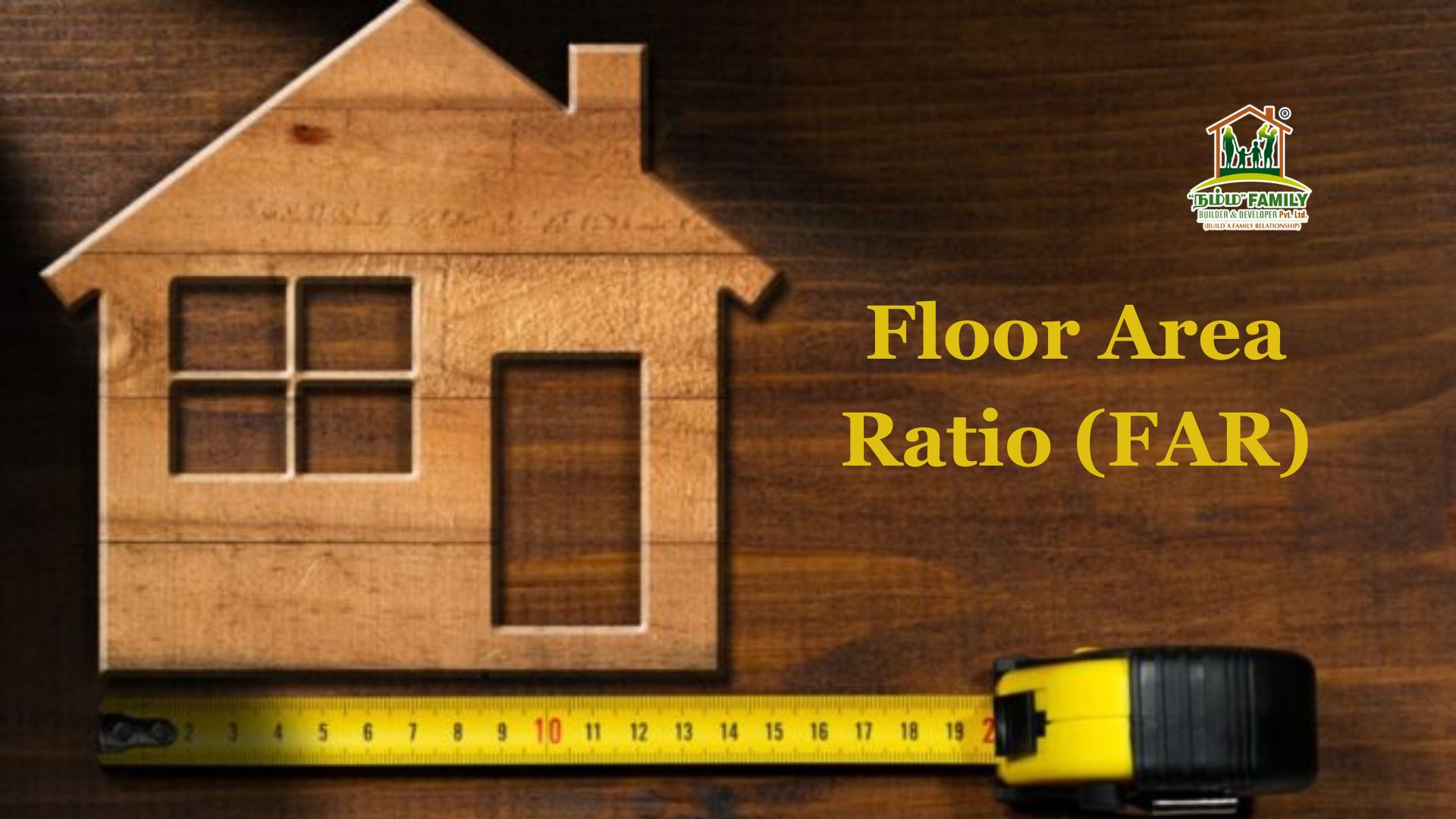
What Is FAR Full Form And How To Calculate?

What Is FAR Full Form?
- FAR Full Form (Floor Area Ratio) refers to the relationship between the flat area on which the building is built and the floor area of the building that can be used or permitted to be used. You can determine the ratio by dividing the total floor area of the building by the total area of the lot.
Floor Area Ratio=Total Building Floor Area /Total Area
- It is the total area of a building, including all floors and exterior walls, for the total built-up area. This building refers to construction in densely populated urban areas.
What Does The Floor Area Ratio Tell Us?
- The floor area ratio calculates the entire area. Non-occupancy areas such as basements, parking garages, stairways, and elevator shafts are excluded from the square footage calculation.
- Buildings with multiple floors may have the same floor area ratio value. Each city has a well-defined capacity or a limited space that can be safely used. The floor area ratio varies as development patterns and construction activities vary and the nature of the land or site on which a building is placed varies.
- The land area ratio is an important determining factor in every country. Generally, the real estate industry increases the floor area to open up space and land resources for developers.
Purpose Of Floor Area Ratio
- Land area ratios are used by local governments to divide land into zones to control urban density. This ratio limits not only the density of the building but also the number of people allowed in the building without restrictions on the external shape of the building.
- All the floors of the building on the ground must be more than one-fifth of the total floor area of the plot. Architects can use allowable areas in single-story buildings or apartment buildings, allowing flexibility in building design when combining vertical and horizontal boundaries.
Interpreting Floor Area Ratio
- The floor area ratio considers the entire floor area, not just the footprint of the building. Unoccupied floor area ratio such as parking garages, elevators, and basements is not included in the calculation.
- Municipalities may experience limited space or capacity. Use beyond this capacity causes stress. These are also referred to as safe load factors.
- The real estate industry seeks an increase in FAR, which indicates that developers are trying to open up land resources and space. Restricts construction.
- If the floor area ratio rises, the estate becomes more valuable if the building is built to allow for additional room and people.
How To Calculate Floor Area Ratio?
- FAR is the ratio of the total floor area in a building to the lot size.
Formula:
Floor area ratio = total floor area of building or built-up area/area of plot
- Two FSI means that the total floor area of a building is twice the total area of the land on which the building is constructed.
- A developer can build 40 square meters on the ground floor 40 square meters on the first floor and the remaining 20 square meters on the second floor because the total built-up area should be more than 100 square meters.
Difference Between Between FAR And FSI?
- Aspect ratio and ground displacement are often used interchangeably. Both mean the same thing, and there is an important difference between the two. FAR is calculated as a ratio while FSI is calculated as a percentage.
- In India, this Floor Area Ratio (FAR) is widely used. Other countries use the Floor Space Index (FSI). The basic difference between them is that earlier they expressed in decimals but later they used percentages.
Benefits And Limitations Of Floor Area Ratio
Benefits :
- Ensures the safety of buildings as per FAR-related provisions and keeps unauthorized construction under control.
- In the absence of floor area ratio and Floor Space Index, unauthorized constructions increase. Important in proper urban planning are:
- There is a clear boundary between open space and built-up space.
- It helps in the planned development of a city as it is ensured by the concerned authorities that construction is done based on population density and other criteria.
Limitations :
- The effect of the floor area ratio on land value cuts both ways. Sometimes a high floor area ratio can increase the value of a property.
- An apartment building allows for more spacious rentals or more tenants and increased floor area makes a property more valuable.
- A good large apartment on a plot of land. A developer who can build complexes can reduce the value of the adjacent property with a higher resale value enhanced by a view that is currently obstructed.
Advantages Of Floor Area Ratio
- Additionally, other benefits unique to the rate include:
- These apply equally to all types of structures FAR applies to a wide range of sizes with equity.
- This rate assumes the possibility of more than one structure on the parcel.
- This allows for a large architectural variety and fits directly into the structure.
- These provide building capacity and assessment, useful for city planners and government agencies.
- Uses a new process rather than traditional norms.








This Post Has 2 Comments
I was suggested this website by my cousin. I’m not sure whether this post is written by him as nobody else know such detailed about my trouble. You’re amazing! Thanks!
Thank you so much for your great comment.Thanks for suggesting it.